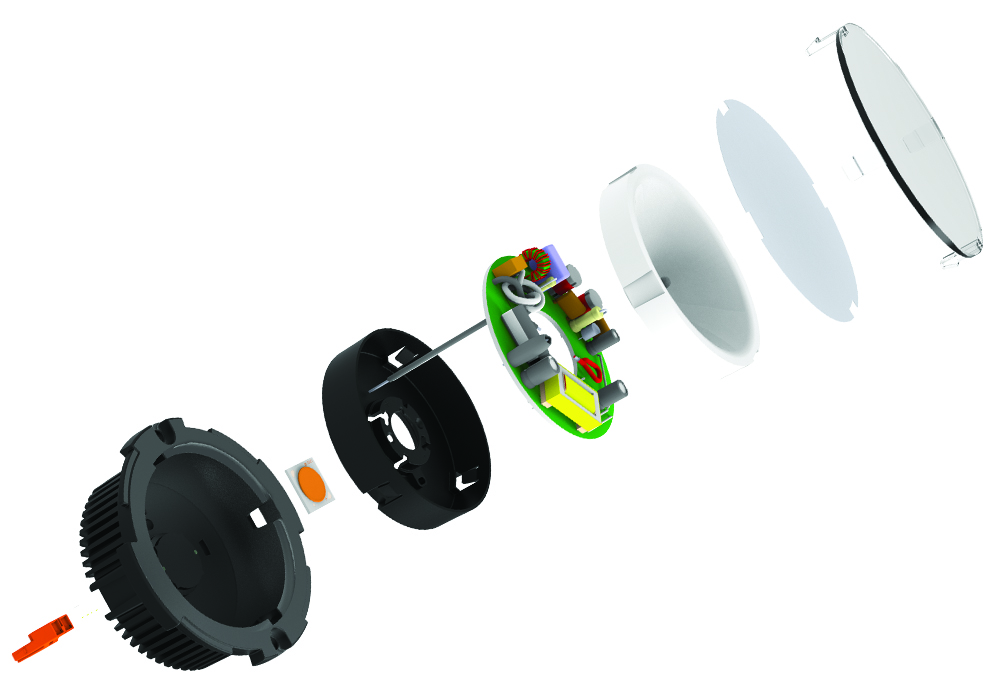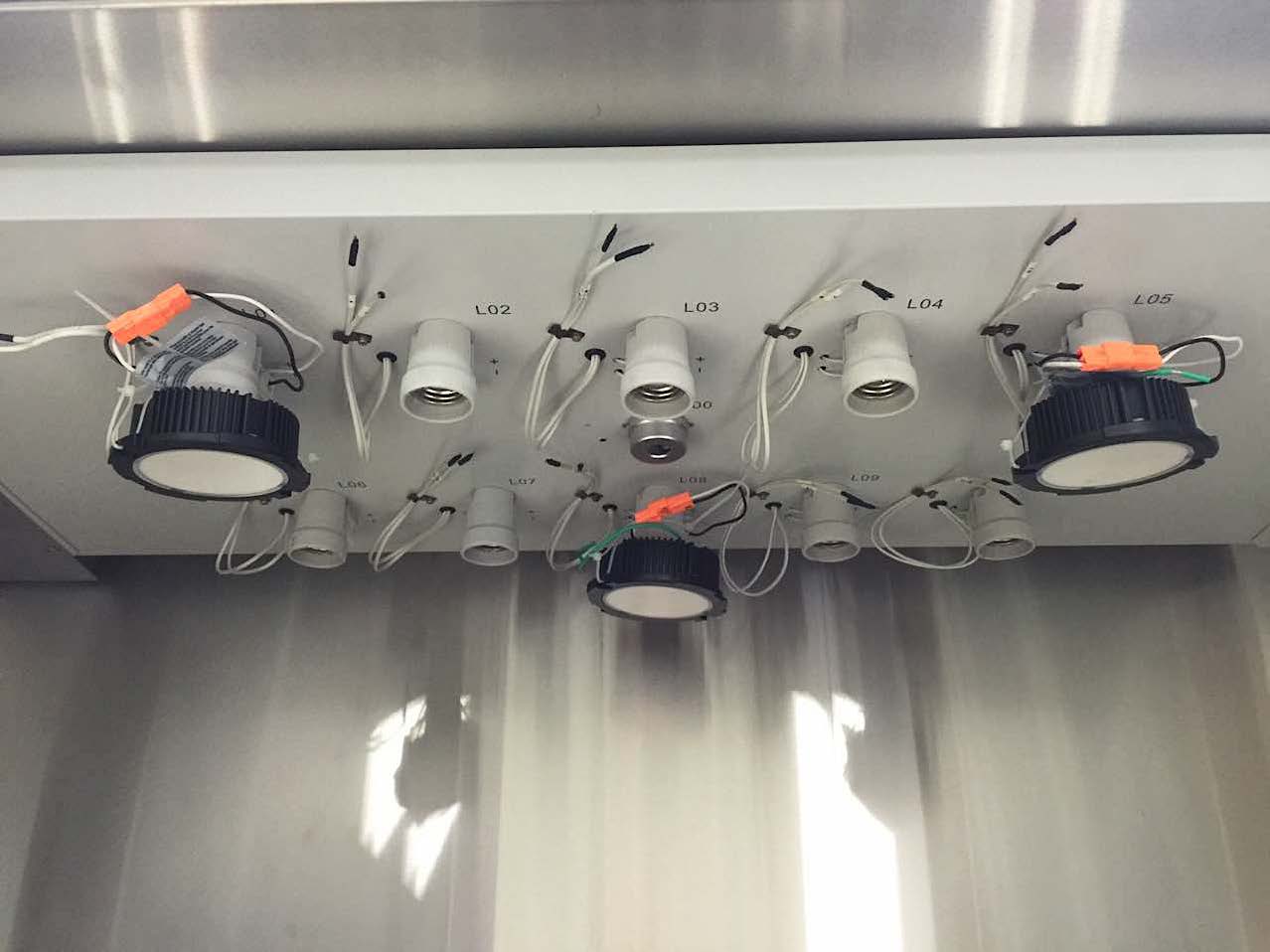Accurately measuring the longevity of LED fixtures using LM-84 and TM-28
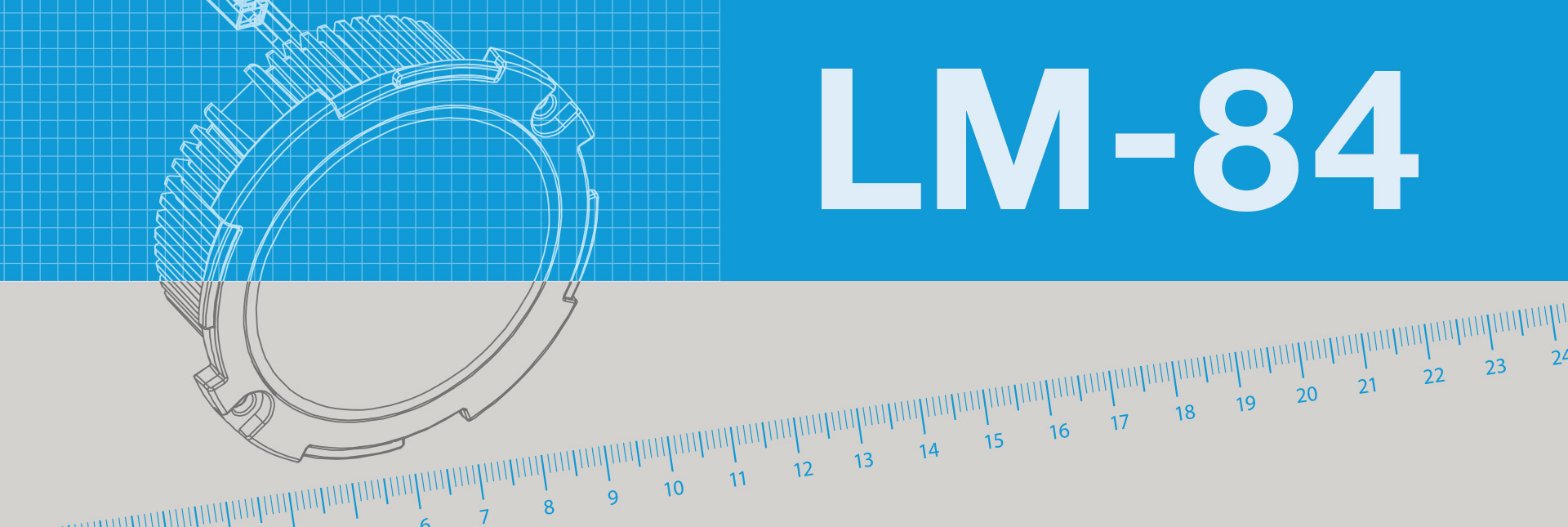
How Reliable is an LED luminaire?
LED based light fixtures have seen a meteoric rise in market acceptance over the last ten years and have demonstrated incredible energy savings. However, the initial euphoria around life expectancy has gradually declined and defaulted to the magic 50,000 hours or five-year warranty. Some manufacturers offer a ten-year warranty, but buyer beware, read the fine print! At the end of the day, what do the numbers really mean? Where do they come from and do they offer a realistic measure of reliability?
To answer the above questions requires knowledge on four major factors:
- The components that comprise an LED light fixture
- What the weak links really are
- Reliability of system and components estimates
- The effect of the environment on the fixture
LED Module Components
Exploded view of the DRD2 LED module illustrates the key components of an LED module. The LED, power supply, reflector, lens and heatsink.
Heat is the key factor that affects the long-term reliability of the system. In simple terms, the higher the temperature in the system the more susceptible it is to failure.
Most LED fixture manufacturers use LM-80 data supplied by LED manufactures to justify their TM-21 L70 extrapolated 50,000-hour longevity claim. However, the LED is usually not the weakest component in the system. Instead, the weakest components usually reside in the power supply and are typically electrolytic capacitors and mosfets. Longevity estimates of these components are based on operating temperature, ripple current and operational life data provided by the manufacturer. A well-designed LED system manages operating temperature and provides overtemperature control to ensure electronic components do not overly stress.
For more information on LED luminaire lifetime testing and reporting, please refer to LED Luminaire Lifetime: Recommendations for Testing and Reporting. Needless to say, this is a complex subject with many design, manufacturing and environmental variables.
What Environmental Factors Affect Lifetime?
The key environmental factors that affect the real working lifetimes of any LED luminaire are temperature, time and operational abuse. High indoor ceilings, elevated outdoor temperatures and large shifts in ambient temperatures can place significant stress on the LED system. In addition, the amount of time the LED fixture is on can vary significantly. LED downlights in bedrooms used only at night stress the light fixture much less than 24/7 commercial or corridor applications. Another reason for LED failure is overvoltage and surge, particularly with 277V systems.
The luminaire designer can mitigate the effects of environmental variables with appropriate thermal management and sufficient power supply input protection. However, the end user must still comply with environmental operating parameter requirements for successful long-term operation. Placing a typical downlight into a sauna or shower application can cause problems if the light fixture cannot handle the humidity.
LM-84 to the rescue!
DMF uses the LM-84-14 test protocol to generate data to estimate the product lifetime of its DRD2 LED modules. The test has been running for over 9,000 hours, with modules operating at 120V and 277V in a 45°C (113°F) ambient environment. Each module is tested every thousand hours for lumen output, chromaticity X/Y color shift and input power.
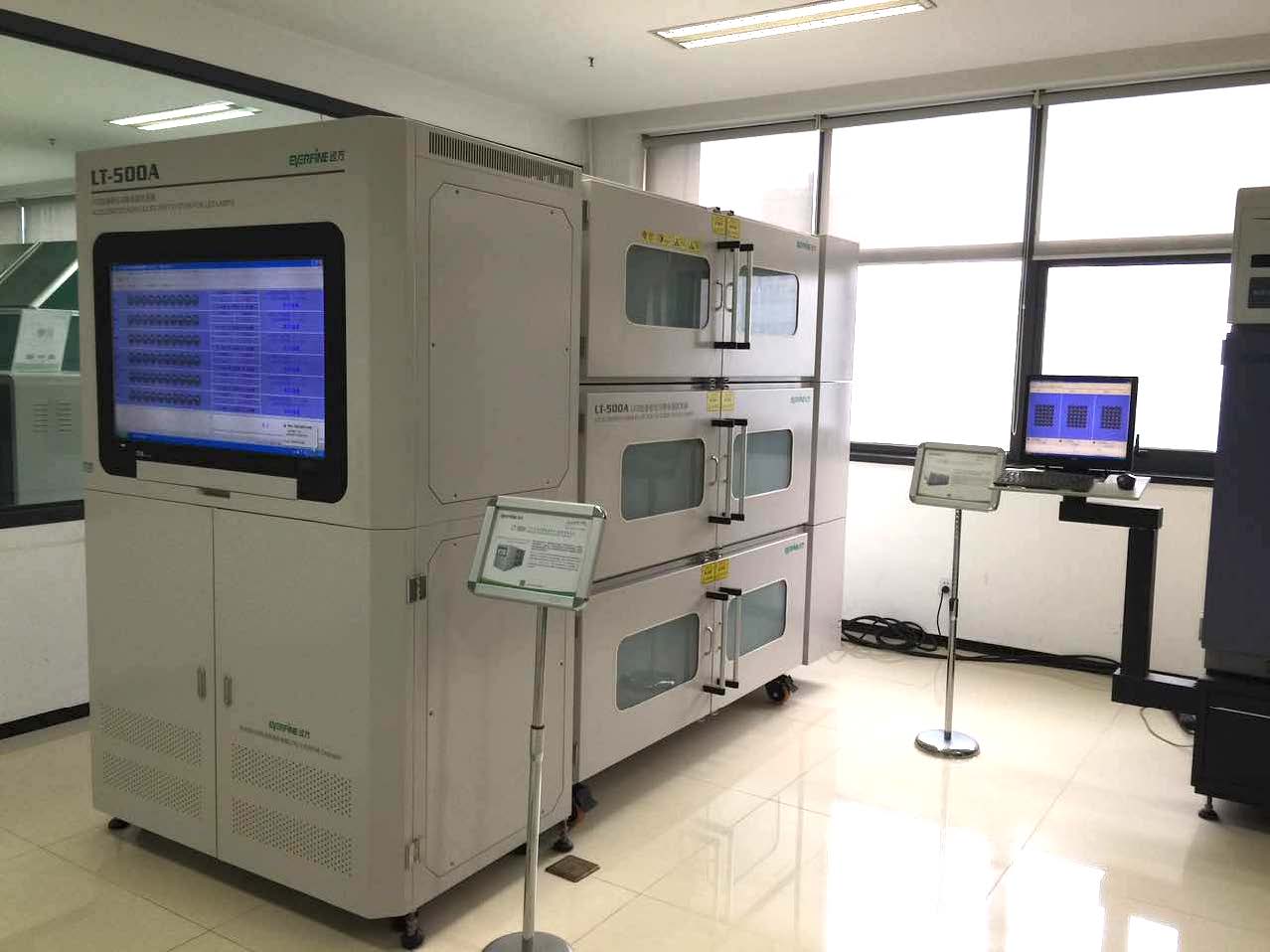
Temperature-controlled test chamber equipment.
The Results
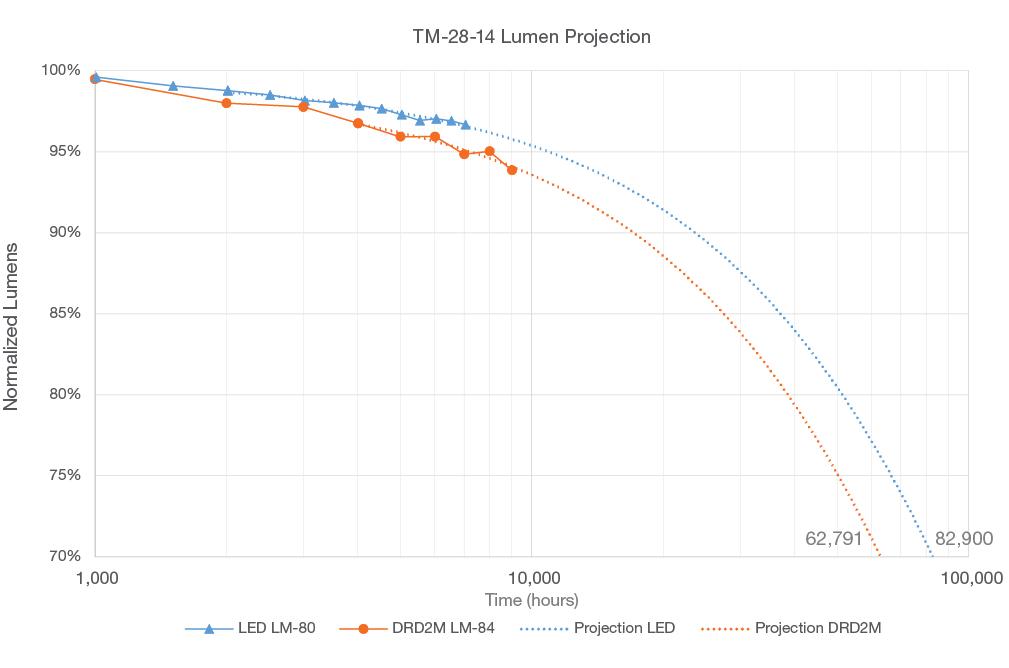
Normalized lumen output of test fixtures plotted on a logarithmic time scale, along with the exponentially extrapolated curve to create the projections.
The LED data is also included from the LED manufacturers published LM-80 file. Notice how LED extrapolation indicates better lumen maintenance over time than the modules. This illustrates that using only LED LM-80 based information extrapolations can provide an optimistic prediction of longevity.
Using the 9000-hour test data, the Luminous Flux Maintenance Life L70(9k) based on IES TM-28-14 is L70(9k) > 62,791 hours (at Ta = 45°C).
The key result is the L70(9k) calculated lifetime of 62,791 hours. In other words, the extrapolated test results indicate that the DRD2 modules will maintain at least 70% of their initial lumens for over sixty thousand hours. In addition, the power requirements of the modules reduced by over two watts since DMF initiated these tests. That further mitigates the effects of heat within the system and improves reliability. DMF also anticipates reduced power requirements to achieve given lumen outputs will continue as LED efficiency continues to improve. Even further, better results are expected when the modules operate in real-world situations where the ambient temperature is likely to be less than 45°C (113°F).
What Does it All Mean?
In conclusion, DMF is leading the way among LED fixture providers using tests such as LM-84 to validate our longevity and reliability claims. DMF has proven that the 50,000-hour reported lifetime for the DRD2 LED module is valid with the LM-84 test data and the TM-28 data extrapolation. In contrast, few LED fixture manufacturers have published the results of LM-84 tests on their light fixtures. This makes it impossible for consumers to objectively assess longevity claims. DMF will continue to use the LM-84 as well as explore additional test methods to validate the DRD2 and other LED light fixtures.
Learn more about the DRD2 Recessed LED Downlight.

